Product Description
Wild Caught King Salmon Fillet
FROM 2024 CATCH SEASON - This product is Ocean Run, meaning fillets vary in size and limited supplies are available of each fillet size.
King salmon has a high healthy fat and protein content, making it perfect for anyone eating a ketogenic diet, paleo, or gluten-free. King Salmon is a rich source of iron, selenium, and Vitamins A, B, and D. King salmon offers the highest levels of Omega 3-fatty acids of all of the salmon species. Each of our King salmon fillets can be described as big and meaty.
Due to the wild caught nature of our products, fillets are offered at different size ranges as they are available. A general rule for portion size is 6 oz per person, so each pound of salmon can provide roughly 2.5 servings from a fillet.
King Salmon are the largest and rarest salmon of the five Alaskan species. It is rich in flavor and high in Omega-3 fats. The meat is succulent and almost creamy in texture due to its high oil content. These fillets are Alaskan hook-and-line caught by our friends at Yakobi fisheries.
$49.99/lb
How to cook King Salmon
King Salmon has a high oil content that makes it great for grilling, broiling, sautéing, roasting, poaching, steaming, or smoking. King Salmon’s flavor is also greatly enhanced with a seafood seasoning or marinade. For more cooking tips and recipes, visit our blog here.
Sustainably Harvested in Bristol Bay, AK & Wild Caught and Processed in the USA
Nutrition Information
Serving Size 3 oz (85g)
Amount Per Serving
Calories 200
Protein 22g
Fat 11g
Saturated Fat 3g
Cholesterol 70mg
Sodium 51mg
Total Omega-3s 1476mg
*Cooked, 3 oz./ 85 g | Source: USDA Standard Reference Release 28 | Rounded per FDA guidelines
Alaskan King Salmon Fillet (Bone-In)
Alaskan King Salmon Fillet (Bone-In)
Couldn't load pickup availability
Product Description
Wild Caught King Salmon Fillet
FROM 2024 CATCH SEASON - This product is Ocean Run, meaning fillets vary in size and limited supplies are available of each fillet size.
King salmon has a high healthy fat and protein content, making it perfect for anyone eating a ketogenic diet, paleo, or gluten-free. King Salmon is a rich source of iron, selenium, and Vitamins A, B, and D. King salmon offers the highest levels of Omega 3-fatty acids of all of the salmon species. Each of our King salmon fillets can be described as big and meaty.
Due to the wild caught nature of our products, fillets are offered at different size ranges as they are available. A general rule for portion size is 6 oz per person, so each pound of salmon can provide roughly 2.5 servings from a fillet.
King Salmon are the largest and rarest salmon of the five Alaskan species. It is rich in flavor and high in Omega-3 fats. The meat is succulent and almost creamy in texture due to its high oil content. These fillets are Alaskan hook-and-line caught by our friends at Yakobi fisheries.
$49.99/lb
How to cook King Salmon
King Salmon has a high oil content that makes it great for grilling, broiling, sautéing, roasting, poaching, steaming, or smoking. King Salmon’s flavor is also greatly enhanced with a seafood seasoning or marinade. For more cooking tips and recipes, visit our blog here.
Sustainably Harvested in Bristol Bay, AK & Wild Caught and Processed in the USA
Nutrition Information
Serving Size 3 oz (85g)
Amount Per Serving
Calories 200
Protein 22g
Fat 11g
Saturated Fat 3g
Cholesterol 70mg
Sodium 51mg
Total Omega-3s 1476mg
*Cooked, 3 oz./ 85 g | Source: USDA Standard Reference Release 28 | Rounded per FDA guidelines
 sssss
sssss
Frequently Asked Questions
How will I receive my product?
Items are shipped in an insulated box with dry ice to keep items frozen until they reach your home. All orders are shipped via FedEx unless another carrier is requested by the customer. You will be emailed the tracking information as soon as the order ships. Please allow until 8PM for updated information from FedEx.
How is the fish packaged?
All products are Individually vacuum-sealed in BPA-free plastic.
What does “Sustainably Harvested” mean?
For sockeye salmon, the Alaska State Department of Fish and Game monitors all commercial, sport, and residential salmon fishing. This means a set number of permits are sold each season based on predictions of the number of salmon expected to return to spawn. As the salmon move towards the bay, researchers actively monitor their movement and count the number of salmon in each school. They then use this data to determine when the fishermen are allowed to fish, if the volume of salmon is too low they are not allowed to fish. Once the volume rises to a number which allows for enough fish to escape upstream to spawn, the fishermen are given a set amount of time that they are allowed to fish. This timed fishing allowance and escapement number is vital to the sustainability of salmon.
How should I store my seafood?
We guarantee the quality of our products to be maintained for one year from purchase when kept in proper conditions. All seafood should be kept in a freezer that maintains even temperature, do not store any seafood on the door or towards the front of the freezer, and do not stack other items on top of seafood. If your seafood loses its vacuum seal, plan to use those pieces first! They are still completely safe to eat but are more prone to freezer burn. Freezer burn is the process of water being pulled from the fish and turned into ice crystals.




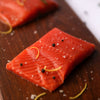 Wild Alaska Salmon
Wild Alaska Salmon Alaska Salmon Burgers
Alaska Salmon Burgers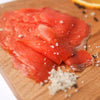 Smoked Salmon & Seafood
Smoked Salmon & Seafood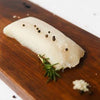 Wild Alaska Whitefish
Wild Alaska Whitefish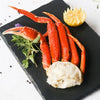 Wild Shellfish & Shrimp
Wild Shellfish & Shrimp Wild Albacore Tuna
Wild Albacore Tuna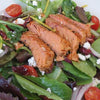 Canned Seafood
Canned Seafood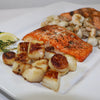 Meal Box & Samplers
Meal Box & Samplers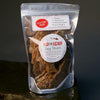 Pet Products
Pet Products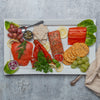 Gifts
Gifts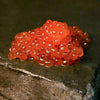 Specialty
Specialty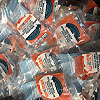 Wholesale Ordering
Wholesale Ordering




